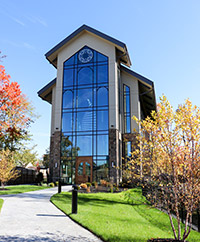First Year They Sleep
Years ago, I visited an older parishioner of mine. While sitting and talking at her kitchen table, I looked out the window and noticed row after row of peonies with their large, drooping blossoms covering her backyard. Commenting on their beauty, she insisted that I take some for my yard. A few days later I did, thinking all the time of next spring and seeing their beautiful blossoms from my kitchen window.
Early next spring, tender shoots emerged from the thawing ground. Soon the plants were good size bushes, filled with tiny buds. As days turned into weeks, the buds turned dark and the leaves began to wither. The buds never became blossoms. What a disappointment, but perhaps this was to be expected in their first year. Perhaps next spring. As they say when planting new flowers, “First year they sleep; second year they creep; third year they leap!”
The next spring came and went, and the next and the next and so on. Always the same: shoots, leaves, and buds but never any blossoms. I did everything and tried anything but still the plants refused to blossom.
Finally, I decided to take my problem to the most sought-after garden expert in the Cincinnati area. He took one look at the withered leaves and darkened buds and pronounced his judgment, “They’re genetically defective! You’ll save yourself a lot of time, money, and grief if you pull them up, throw ‘em away, and plant new ones.”
A few months later, I was preparing my flower garden for the coming winter months when I came to my “genetically defective” peony plants. I just couldn’t bring myself to pull them up. I had nurtured them for so long and besides, they were given to me by a friend. I cut them back one more time and covered them with a thin layer of rich top soil, thinking all the while, “perhaps next spring!”
Well, next spring came and would you believe it? They produced their first exceptional, beautiful blossom. I am not sure why, but I do know that if I had followed the expert’s advice and pulled them up, they would surely have never blossomed.
CONSIDERING these little plants, I thought of the areas in each of our lives in which we are desperately waiting for little buds to blossom. It could be relationships, circumstances, or other problems. The experts would say from their safe and comfortable places, “What can you do? These things are beyond help! The problem is too big. Put them out of your mind and go on with your life.”
Yet, regardless of the disappointments, set-backs, obstacles, hard work, sacrifice and hardships, we must continue to hope for the blossoms to come, always whispering a prayer to God, “Perhaps next spring.”
Back to Devotions








